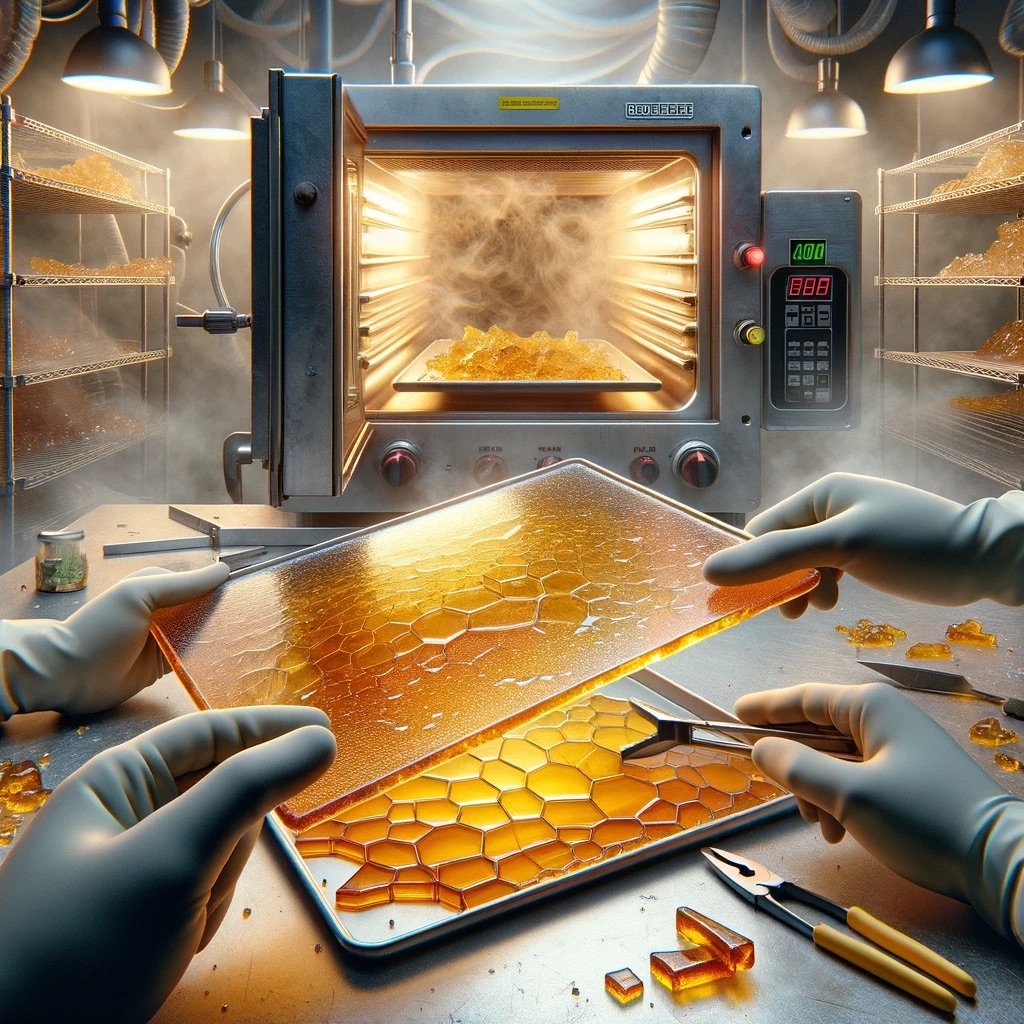What Is Shatter?: The Science Behind the Golden Glass
Cannabis concentrates have been around for about as long as humans have been enjoying the benefits of cannabis, but the way they’re made and consumed has evolved dramatically in just the past few years. If there’s a single style of concentrate that epitomizes this seismic shift in cannabis technology and culture, it’s definitely shatter.
Produced in crystal clear sheets of glittering golden glass, nothing else looks quite like a slab of superb shatter. The shimmering clarity invites you to gaze into its reflective surface, while the tantalizing aroma (and the promise of swift, efficient cannabinoid impacts) urge you to, well, shatter it and consume the intoxicating vapor hidden within.
Shatter is more than just one of the most popular concentrate styles on the market, it’s a symbol of the new wave in cannabis and a high watermark for ambitious extractors who want to make the best. Its dramatic aesthetics often inspire shock and confusion in the uninitiated — and even those who enjoy dabbing shatter often know little about how its made.
The History of Shatter
Long gone are the days when smoking hash in America meant purchasing a piece broken off a brick shipped from Pakistan, Afghanistan or Morocco: By the early ’90s, the advent of prefabricated “kief boxes” and “bubble bags” inspired a dry sift and ice water hash boom that transformed the U.S. market into a largely domestic affair. NorCal dispensary shelves were overstocked with bubble hash by the early ’00s — just in time for the next revolution in cannabis: solvent extraction, which is how shatter is made.
What Is Solvent Extraction?
Solvent extraction isn’t new — it’s used in countless industrial processes, including the decaffeination of coffee and the production of perfumes and food flavors. In fact, none of the “new” techniques for making concentrates are really new, but the application of solvent extraction to cannabis was absolutely groundbreaking. Solvent extraction is complicated, but essentially, a solvent is run through cannabis plant matter, which strips the desirable oils from the plant. Because of its low cost and wide availability, butane has emerged as the most popular solvent option for hydrocarbon extraction, which has led to the term Butane Hash Oil or BHO.
BHO vs. Shatter
But what about shatter? All shatter is BHO but not all BHO is shatter. BHO can take on many forms, including the newly popular extraction, terp sauce.
Consider this metaphor from Larry Blackmon of the ’80s funk-pop group Cameo: When it comes to the many physical forms it can take, BHO is “just like candy.” There are exceptions, but candy is usually just some treatment of the same ingredient: sugar syrup. You can take that syrup and heat it to 270˚F – 290˚F and create a malleable taffy, or you could also raise the heat to 300˚F – 310˚F and end up with a hard, brittle consistency like a lollipop. It’s the same with shatter. Think of shatter as the hard candy of BHO.
CONTINUE LEARNING ALL ABOUT SHATTER HERE


